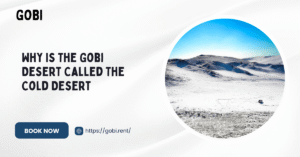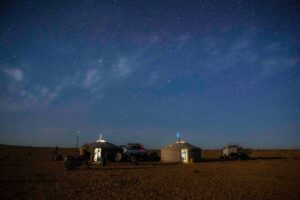The Gobi Desert is one of the most fascinating places on Earth, stretching across southern Mongolia and northern China. Known for its endless horizons, dramatic landscapes, and unique wildlife, it attracts adventurers from all over the world.
If you’re planning a journey through this vast desert, timing your trip is just as important as deciding your route or booking your vehicle. Each season brings its own character, challenges, and rewards. In this guide, we’ll break down the seasons so you can decide the best time to visit Gobi Desert and enjoy your adventure with confidence.
Understanding the Climate of the Gobi Desert
The Gobi is not your typical desert. While most people imagine endless sand dunes, the Gobi actually combines steppes, rocky outcrops, mountains, and yes, stretches of sand as well. Its climate is one of extremes:
- Summer temperatures can soar above 40°C (104°F) during the day.
- Winter nights often plunge well below freezing, sometimes to -30°C (-22°F).
- Winds can sweep across the open plains, bringing dust storms in spring and early summer.
Because of these extremes, having the right preparation and reliable transport is essential. This is why many travelers rely on sturdy 4×4 rentals like Toyota Land Cruisers to navigate the rugged terrain safely.
Spring in the Gobi Desert (March – May)
Spring is the season when the desert begins to awaken after the long winter. The weather is milder compared to summer, though it can still be unpredictable.
Why visit in spring?
- Daytime temperatures are comfortable, usually ranging between 10°C and 20°C.
- Wildflowers bloom across certain regions, adding unexpected bursts of color.
- Fewer tourists mean quieter landscapes and less crowded sites.
Things to consider
Dust storms are more common in spring, so packing protective gear such as scarves, masks, and goggles can make travel more comfortable. Roads may also be challenging in certain areas, making a rugged 4×4 essential.
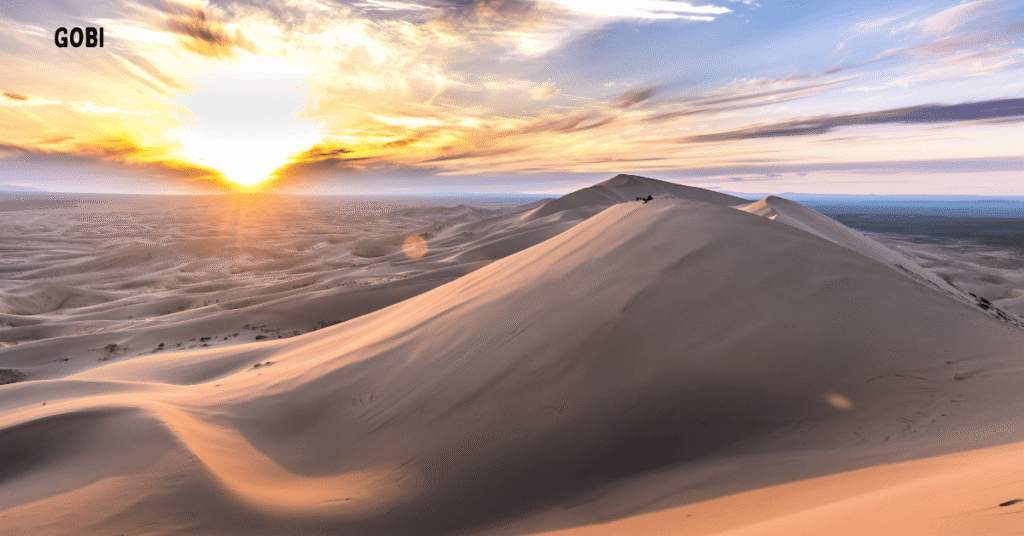
Summer in the Gobi Desert (June – August)
Summer is the busiest season for travel in Mongolia. With long daylight hours and cultural events, it attracts travelers looking to combine desert exploration with local traditions.
Highlights of summer
- The famous Naadam Festival takes place in July, offering a glimpse into Mongolia’s wrestling, horse racing, and archery traditions.
- Daylight stretches for up to 16 hours, giving you more time to explore.
- Iconic sites like Khongoryn Els sand dunes and Yolyn Am gorge are easily accessible.
Challenges of summer
Temperatures can become uncomfortably hot, especially in July and August, often climbing above 40°C. Travelers need to prepare for the heat by carrying plenty of water, sun protection, and ensuring their vehicle is well equipped for the conditions.
Autumn in the Gobi Desert (September – October)
If you ask experienced travelers and locals, autumn is often considered the best time to visit the Gobi Desert. The weather strikes a perfect balance between warmth and coolness, and the skies are often crystal clear.
Why autumn is ideal
- Daytime temperatures range from 15°C to 25°C, while nights are crisp but not too cold.
- The air is clearer, offering incredible stargazing opportunities.
- Wildlife sightings are more common, with gazelles, wild camels, and migratory birds crossing the desert.
- Roads are easier to drive, making self-drive tours smoother.
For photographers and adventurers alike, autumn provides the most comfortable and rewarding conditions.
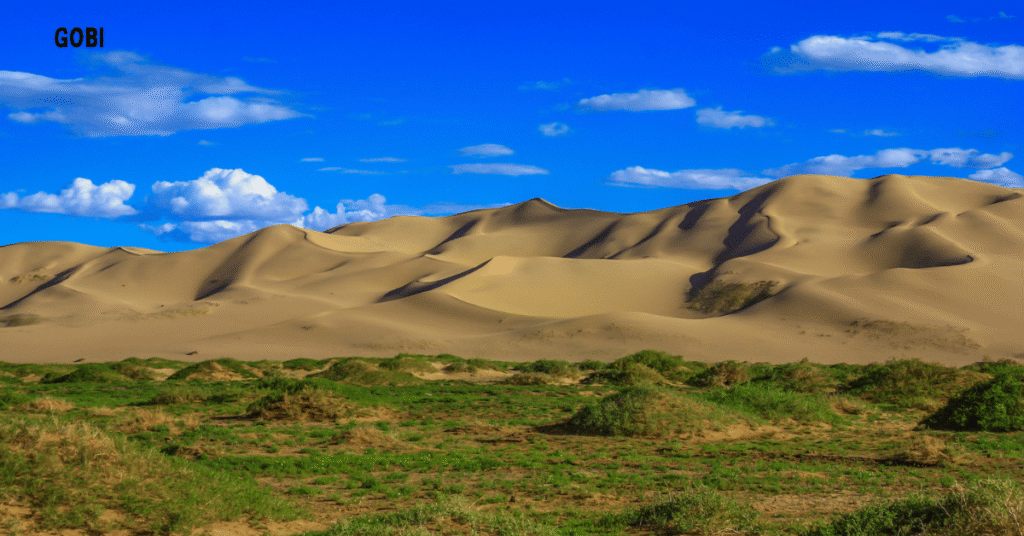
Winter in the Gobi Desert (November – February)
Winter in the Gobi is harsh, but it has its own stark beauty. The desert becomes quiet, with snow covering parts of the steppe and mountains.
Reasons to visit in winter
- Very few tourists, meaning you can experience the desert in solitude.
- Frozen landscapes offer a rare and dramatic perspective of the Gobi.
- Unique cultural experiences with nomadic families who remain in the desert year-round.
What to keep in mind
Temperatures can fall to extreme lows, making proper gear essential. Only well-prepared travelers should consider winter journeys, and traveling with a reliable vehicle and possibly a guide is strongly recommended.
Comparing the Seasons Of Best Time To Visit Gobi Desert
Each season in the Gobi Desert has its own personality. To help you decide, here’s a quick comparison:
- Spring (March–May): Mild, colorful, fewer tourists, but risk of dust storms.
- Summer (June–August): Long days, cultural events, but extreme heat and more crowds.
- Otoño (septiembre-octubre): Comfortable weather, clear skies, best for wildlife and driving.
- Invierno (noviembre-febrero): Harsh cold, solitude, dramatic frozen landscapes.
For most travelers, autumn offers the perfect balance, but spring also appeals to those looking for quiet beauty, and summer works well for those who want to mix desert adventure with Mongolia’s national celebrations.
Travel Tips for Timing Your Gobi Desert Tour
No matter which season you choose, a few tips can make your journey smoother and safer:
- Book early in peak seasons: Summer and autumn rentals fill quickly.
- Pack according to the season: Sunscreen and hats for summer, thermal clothing for winter.
- Always carry extra supplies: Water, snacks, fuel, and first aid are must-haves.
- Choose the right vehicle: A sturdy 4×4 with desert-ready tires and navigation support is essential.
- Plan your route carefully: Distances are vast, and gas stations can be far apart.
Why Choose Gobi Rent for Your Journey
Traveling through the Gobi Desert is unforgettable, but it demands preparation. Alquiler Gobi makes it easier by providing reliable, well-equipped vehicles tailored for desert conditions.
- Strong fleet: Toyota Land Cruisers, trusted for Mongolia’s rugged terrain.
- Flexible options: Self-drive rentals or guided tours, depending on your comfort level.
- Convenient locations: Offices in Ulaanbaatar and Dalanzadgad for easy pickup and drop-off.
- Trusted service: Vehicles equipped for both summer heat and winter cold, giving travelers peace of mind in all seasons.
With Gobi Rent, you can focus on enjoying the desert while knowing you have a reliable partner behind the wheel.
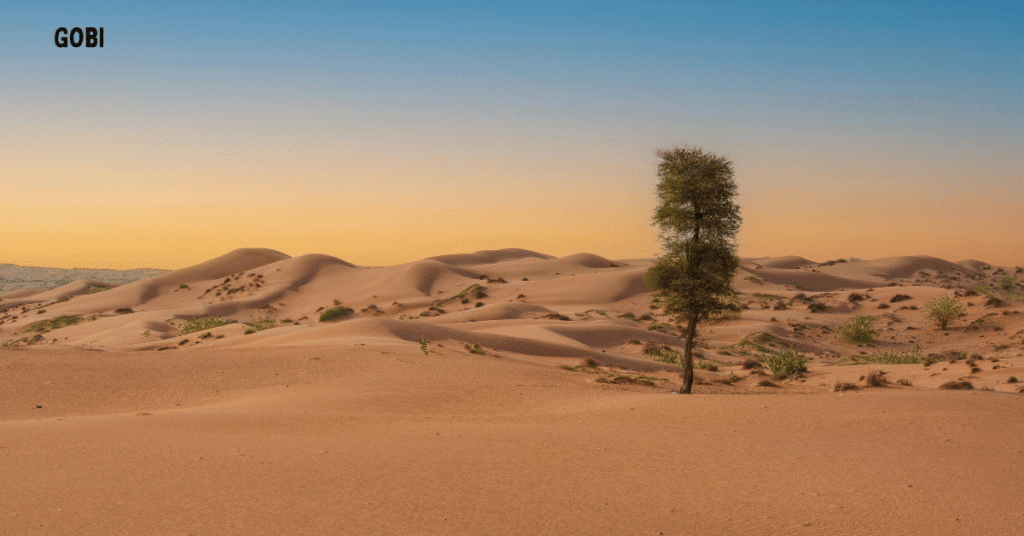
Conclusion
The Gobi Desert is timeless, but your experience depends heavily on when you go. Spring offers wildflowers and tranquility, summer provides culture and long days, autumn gives perfect weather and starlit skies, while winter reveals the desert’s raw solitude.
For most visitors, September and October stand out as the best months to explore the Gobi Desert, but every season has its own magic for those willing to embrace it. Whenever you choose to visit, planning ahead and traveling with a dependable 4×4 rental ensures your journey will be safe, comfortable, and memorable.


